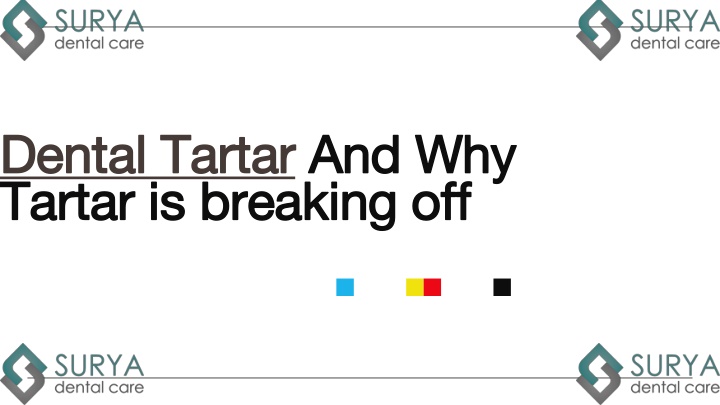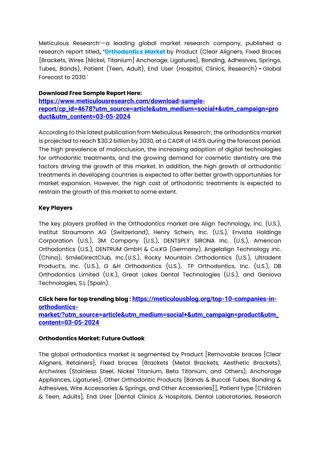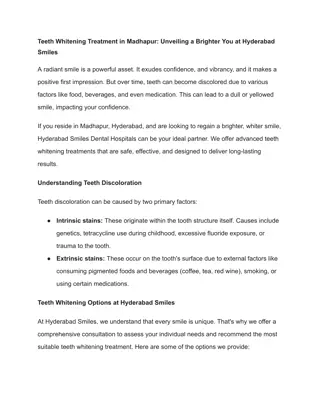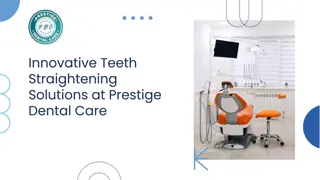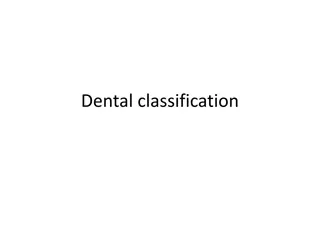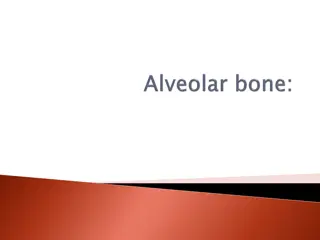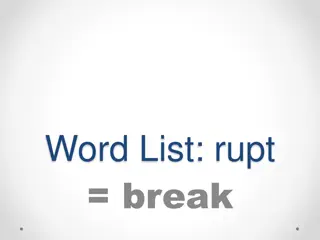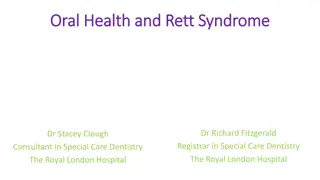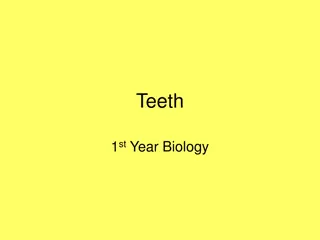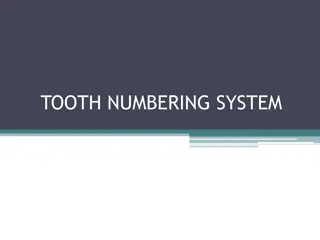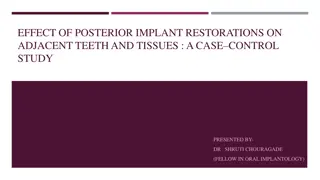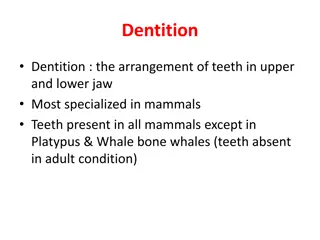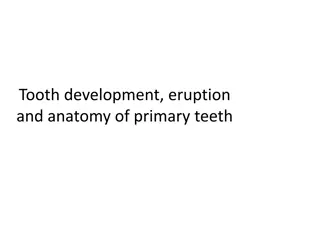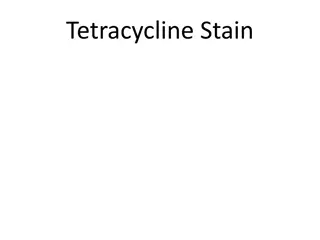What Is Tartar on Teeth and Why is Tartar Breaking Off Teeth?
When the formation of dental plaque is not cleared properly, it forms a hardened dental plaque called Tartar. Tartar can only be removed by the dentist as they bond strongly with the teeth. For more info visit: // /tartar-on-teeth/
Download Presentation

Please find below an Image/Link to download the presentation.
The content on the website is provided AS IS for your information and personal use only. It may not be sold, licensed, or shared on other websites without obtaining consent from the author.If you encounter any issues during the download, it is possible that the publisher has removed the file from their server.
You are allowed to download the files provided on this website for personal or commercial use, subject to the condition that they are used lawfully. All files are the property of their respective owners.
The content on the website is provided AS IS for your information and personal use only. It may not be sold, licensed, or shared on other websites without obtaining consent from the author.
E N D
Presentation Transcript
Dental TartarDental Tartar Dental Tartar And Why Tartar is breaking off Tartar is breaking off And Why
Introduction to Dental Tartar Introduction to Dental Tartar Dental tartar, also known as calculus, is a hardened form of dental plaque that accumulates on teeth over time. More than 50% of adults experience dental tartar due to insufficient oral hygiene practices. Professional removal is essential, as tartar cannot be eliminated through regular brushing and flossing, and its presence can lead to various dental issues, including cavities and gum disease. cavities
What is Dental Plaque? What is Dental Plaque? Understanding Dental Plaque Understanding Dental Plaque Dental plaque is a sticky, colorless film of bacteria that forms on the teeth and along the gum line. It develops when saliva combines with food particles and bacteria, creating a biofilm on the teeth surfaces. If not removed through regular brushing and flossing, plaque can harden into tartar, leading to dental problems such as cavities and gum disease. gum disease Plaque contains harmful bacteria that produce acids, which can erode tooth enamel and irritate gums, making it essential to maintain good oral hygiene.
Transformation from Plaque to Tartar Transformation from Plaque to Tartar Importance of Dental Importance of Dental Hygiene Hygiene Plaque Maturation Plaque Maturation Tartar Formation Tartar Formation Plaque Formation Plaque Formation PlaquePlaque forms when bacteria mix with saliva & food particles, creating a sticky film on teeth, especially near the gum line. If not removed in 24-72 hours, plaque matures. Bacteria produce acids that erode enamel, facilitating tartar hardening. Plaque hardens into tartar through mineralization. Saliva minerals, like calcium phosphate, bind with plaque, forming calculus. Regular brushing & flossing prevent plaque buildup. Good hygiene removes plaque before it hardens, stopping tartar formation. Identification of plaque areas Understanding plaque formation mechanisms Awareness of plaque maturation signs Insights on enamel erosion factors Recognition of tartar characteristics Understanding the mineralization process Establishment of a dental hygiene routine Incorporation of professional dental cleanings
Causes of Tartar Buildup Causes of Tartar Buildup Poor Oral Hygiene Dietary Choices Infrequent Dental Visits Neglecting regular brushing and Skipping routine dental cleanings Consuming sugary and acidic foods flossing allows plaque to accumulate, prevents professional removal of can enhance plaque development, leading to tartar formation, as plaque tartar, allowing it to harden and increasing the likelihood of tartar hardens if not removed within 24 to accumulate, exacerbating oral health buildup on teeth. 72 hours. issues.
Impact of Tartar on Oral Health Impact of Tartar on Oral Health Bad Breath Bad Breath Cavities Cavities Tartar buildup can trap food particles and bacteria, leading to persistent bad breath, also known as halitosis. The acids produced by bacteria in tartar can erode tooth enamel, increasing the risk of cavities and tooth decay. Gum Disease Gum Disease Overall Oral Health Overall Oral Health Tartar can irritate the gums, leading to gingivitis and periodontitis, which can result in gum recession and tooth loss. The presence of tartar negatively impacts overall oral health, making regular dental visits essential for prevention and treatment.
Why Does Tartar Break Off? Why Does Tartar Break Off? Reasons for Tartar Breakage Reasons for Tartar Breakage Factors Contributing to Tartar Stability Factors Contributing to Tartar Stability + Advanced buildup of tartar can create pressure, leading to fragments breaking off during chewing or brushing. Tartar forms a strong bond with tooth enamel, making it resistant to breakage under normal conditions. + Consumption of hard or crunchy foods can dislodge tartar, especially if it has accumulated around the gumline. Regular oral hygiene practices, like brushing and flossing, can help maintain the stability of tartar and prevent breakage. + Dental issues such as gum disease or weakened enamel may compromise the bond between tartar and tooth structure, causing breakage. Professional dental cleanings can effectively remove tartar before it reaches critical buildup levels, reducing the likelihood of breakage. + Excessive force during brushing or flossing may inadvertently cause tartar fragments to loosen. Certain toothpastes and mouthwashes can strengthen enamel, aiding in the prevention of tartar breakage. + Older tartar deposits become more brittle over time, making them prone to cracking or flaking off. Maintaining a balanced diet and avoiding excessive hard foods can reduce the risk of tartar loosening.
Appearance of Appearance of Broken Tartar Broken Tartar Color Characteristics Fresh tartar appears pale yellow or off-white, while older tartar can be darker due to stains. Size and Shape Tartar can break off into various sizes, ranging from tiny granules to larger, pebble-like chunks. Texture Description Broken tartar feels hard and gritty, resembling sand or small stones, often sharp or jagged at the edges.
Preventing Tartar Buildup Preventing Tartar Buildup Brush your teeth at least twice a day with fluoride toothpaste to remove plaque before it hardens into tartar. Floss daily to clean between teeth and remove food particles and plaque that a toothbrush can't reach. Visit your dentist regularly for professional cleanings and check-ups to ensure any tartar buildup is addressed promptly. Limit sugary and acidic foods that contribute to plaque formation; opt for a balanced diet rich in fruits and vegetables. Use an antibacterial mouthwash to help reduce plaque and prevent tartar buildup between brushing sessions.
T Thank You! hank You! https://www.suryadentalcare.com/ https://twitter.com/CareSurya https://www.facebook.com/suryadentaltrichy https://www.instagram.com/suryadentalsenthil/
